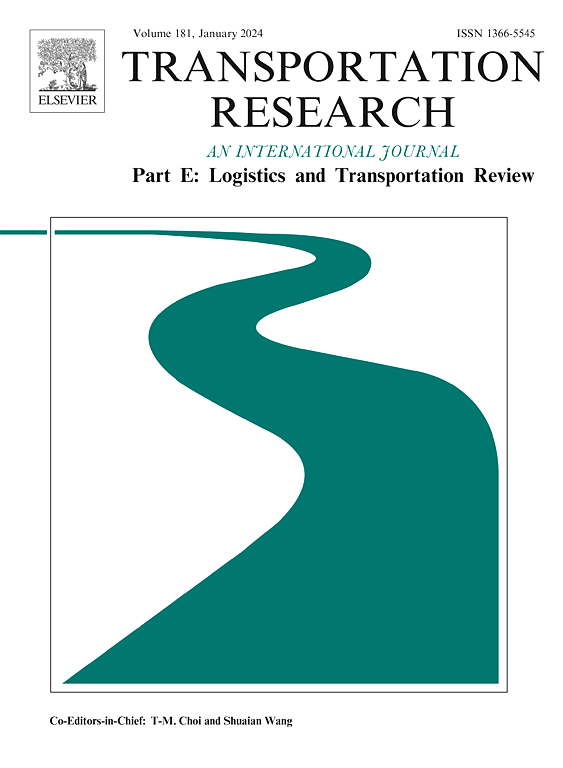A comprehensive assessment of connected and automated vehicle analytical, modeling, and simulation tools
IF 8.3
1区 工程技术
Q1 ECONOMICS
Transportation Research Part E-Logistics and Transportation Review
Pub Date : 2025-02-21
DOI:10.1016/j.tre.2025.104007
引用次数: 0
Abstract
Connected and Automated Vehicles (CAVs) promise to redefine the future of transportation. Infrastructure Owners and Operators (IOOs require advanced analytical, modeling, and simulation (AMS) tools) to grasp the impact of CAVs on their strategic goals, such as improving safety, enhancing mobility, and advancing equity, and assess policy modifications to steer the deployment of this technology effectively. Although recent research has made strides in developing models that characterize CAV behavior in mixed-traffic scenarios, significant modeling gaps persist. These gaps hinder decision-makers and policymakers from fully understanding how CAVs can serve as an instrumental force in driving desired improvements in transportation system performance. This study aims to identify these gaps by organizing two stakeholder webinars that focus on CAV AMS tools. The discussions from these webinars are categorized into three primary areas: CAV technologies, road user behaviors, and system-level modeling. This categorization helps structure an in-depth literature review designed to pinpoint existing shortcomings in CAV research. The study also provides an overview of current datasets that are both representative and capable of addressing some of these research gaps. Ultimately, this study seeks to act as a valuable reference for directing future research efforts in CAVs.
求助全文
约1分钟内获得全文
求助全文
来源期刊
CiteScore
16.20
自引率
16.00%
发文量
285
审稿时长
62 days
期刊介绍:
Transportation Research Part E: Logistics and Transportation Review is a reputable journal that publishes high-quality articles covering a wide range of topics in the field of logistics and transportation research. The journal welcomes submissions on various subjects, including transport economics, transport infrastructure and investment appraisal, evaluation of public policies related to transportation, empirical and analytical studies of logistics management practices and performance, logistics and operations models, and logistics and supply chain management.
Part E aims to provide informative and well-researched articles that contribute to the understanding and advancement of the field. The content of the journal is complementary to other prestigious journals in transportation research, such as Transportation Research Part A: Policy and Practice, Part B: Methodological, Part C: Emerging Technologies, Part D: Transport and Environment, and Part F: Traffic Psychology and Behaviour. Together, these journals form a comprehensive and cohesive reference for current research in transportation science.

 求助内容:
求助内容: 应助结果提醒方式:
应助结果提醒方式:


